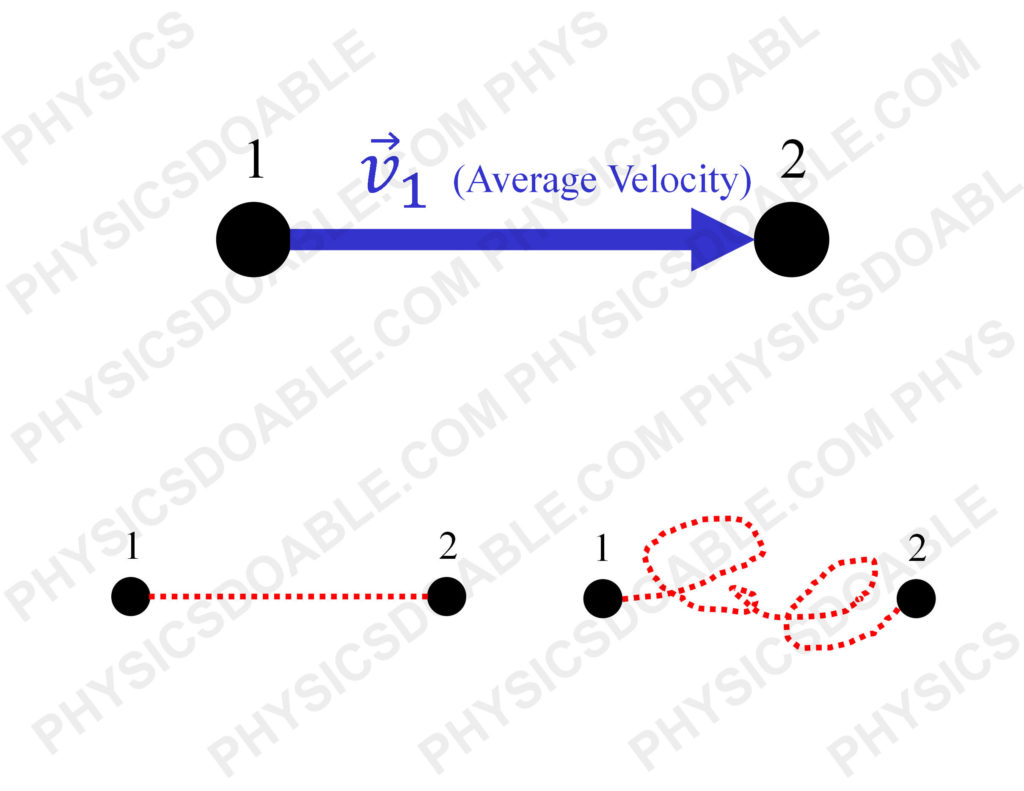
Q: I had a quick question about the particle models. If time stamps are t=1, t=2, t=3, etc. and the velocity vectors 1,2, and 3 are listed between each point, these vectors refer to AVERAGE velocity right? And since average velocity uses displacement between time stamps, a particle in the model could theoretically move back and forth between time stamps and we wouldn’t know, correct?
A: Your understanding is good! Velocity vector drawn between 2 dots (time instants) represents the average velocity in the time interval, not the instantaneous velocity at a specific time instant. Theoretically, a particle/object could move along any path, for example, back and forth, zig-zag, between the 2 dots (time instants). Motion diagram is still pretty rough graphical description of a motion. It is fundamental though. That’s why we started with it.
Q: Momentum vs. Kinetic Energy
How is momentum and kinetic energy-related and different? Momentum changes based on impulse but will change at a constant rate if there is a constant force and it is simply mass*velocity. However kinetic energy is mv^2 so if there is a constant force then does kinetic energy exponentially increase? How does this work with the law of conservation of energy, or am I simply overthinking this and overlooked something?
A: You didn’t overthink or overlook anything. It’s actually a good question. We will discuss these 2 concepts in the second half of this quarter.
Momentum is a vector having direction and magnitude, while KE is a scalar having only magnitude. The common factor/quantity affecting both is the force.
The change of momentum depends on impulse, which is Force * Time, while the change of KE depends on work, which is Force (dot product) Displacement.
We may need to more careful when claiming how the momentum or the KE changes, linearly or exponentially? After all, time also affects the impulse and displacement influences the work.
The conservation of energy has relationship with the work/energy. If the net work is zero, KE is conserved. If only conservative forces (like gravity) do non-zero work, the mechanical energy is conserved. More details and examples will be discussed in class later!
